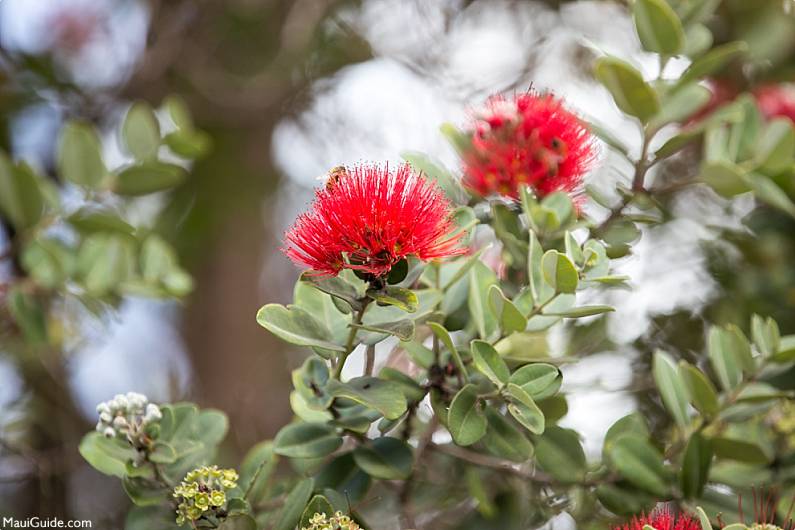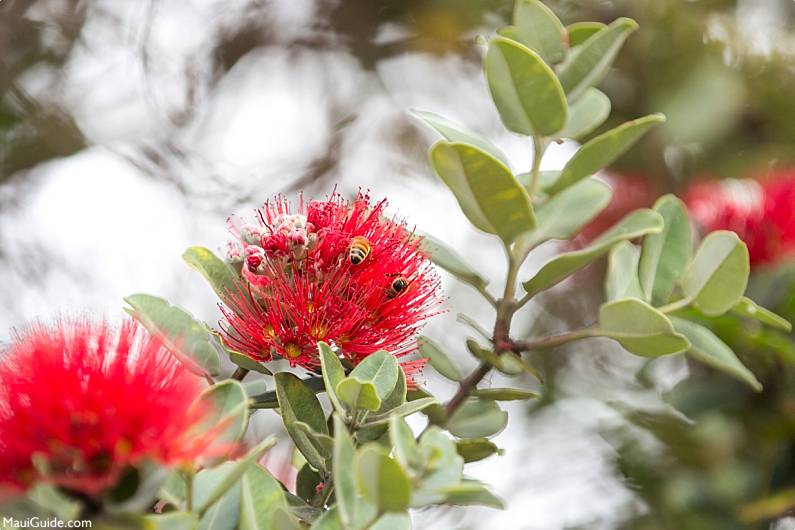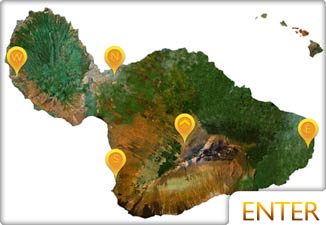Maui > Nature > Invasive Species > Ohia Rust

Ohia Rust
Austropuccinia (formerly Puccinia) Psidii
Eloise M. Killgore and Ronald A. Heu
About Ohia Rust
In April 2005, an ohia plant, Metrosideros sp., infected by a rust disease was submitted to the University of Hawaii (UH), college of Tropical Agricultural and Human Resources (CTAHR), Agricultural Diagnostic Service Center’s (ADSC) Plant Disease Diagnostician Desmond Ogata by a Waimanalo (Oahu) grower who specializes in native plants. There were no previous records of rust disease on ʻohiʻa trees in Hawaii or elsewhere.

In May 2005, rose apple Syzygium Jambos, heavily infected with a similar rust disease was observed on the Maunawaili Trail by Department of Land and Natural Resources (DLNR), Division of Forestry and Wildlife (DOFAW) staff. In July 2005, two species of Eugenia – E. koolauensis and E. reinwardtiana and guava Psidium guajava were observed in Makiki with a similar rust disease. Infected ohia plants have since been observed in Manoa, Makiki, and Kalihi. All the confirmed reports of this rust disease are from the island of Oahu.
Symptoms
Symptoms of the disease first begin as tiny bright yellow powdery eruptions in circular patterns on the leaf or stem surface. These infections loci or spots expand and become necrotic shoot. Leaves and stems can be deformed by the disease and growing tips can die back if the infection is severe. These symptoms are more likely to be seen in tender, young growing points.
Although not yet seen in Hawaii, the disease can also cause similar symptoms on fruit.
Based on records of a rust disease that is known to occur on ohia-related plant species, this rust was tentatively identified as Puccinia Psidii Winter. The identification of this rust pathogen was later confirmed in 2006 by Dr. Shaobin Zhoug, UH CTAHR PEPS, using DNA profiles for P. psidii. According to records from Brazil and Florida, P.psidii has a very wide host range, which includes eucalyptus, paperbark tree, guava, rose apple, allspice, myrtle, species of Eugenia, and others. It is commonly referred to as eucalyptus rust and guava rust in Florida, the Caribbean, and Central and South America.
Distribution
Since April 2005, surveys and requests for disease sightings have shown that this rust is widespread in the State, occurring on various members of the family Myrtaceae on all the Hawaiian Islands (except Niihau.)

Management
At the present time, there is no approved fungicide that can be used in controlling this disease. The Department recommends good sanitation practices, such as removing and bagging and or destroying infected leaves or other plant parts as soon as symptoms appear. Also, keeping the foliage dry when irrigating will help in lowering disease levels.
Under Plant Quarantine Interim Rule 07-2, quarantine has been imposed to restrict the importation of all plants and plant parts in the family Myrtaceae from areas known to be infested with ohia rust. South America and the states of Florida and California have been determined to be areas infested with ohia rust. This quarantine was established to prevent the introduction of additional and possibly more virulent strains of ohia rust into Hawaii.
To learn more, visit Hawaiian Invasive Species Council.
See more about Hawaii Invasive Species.




